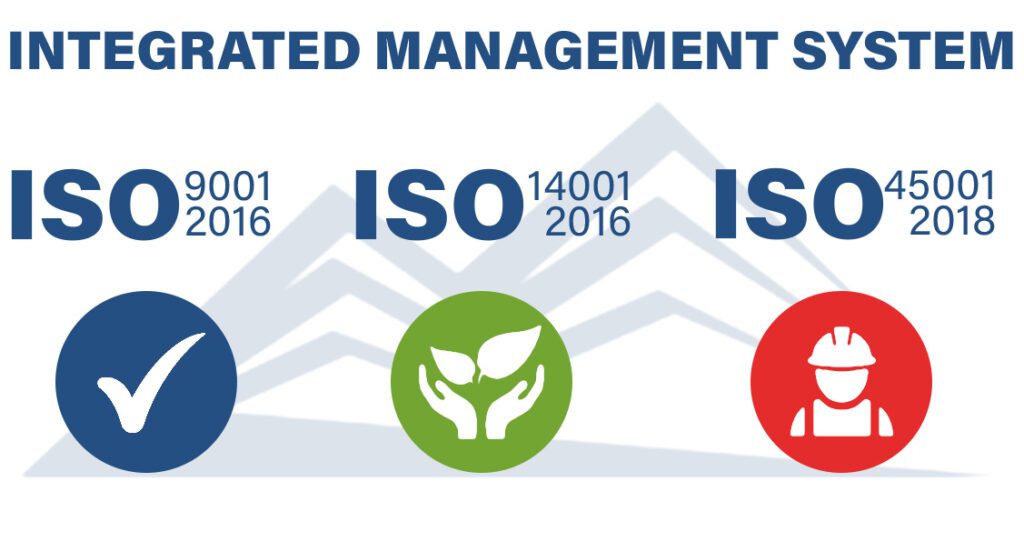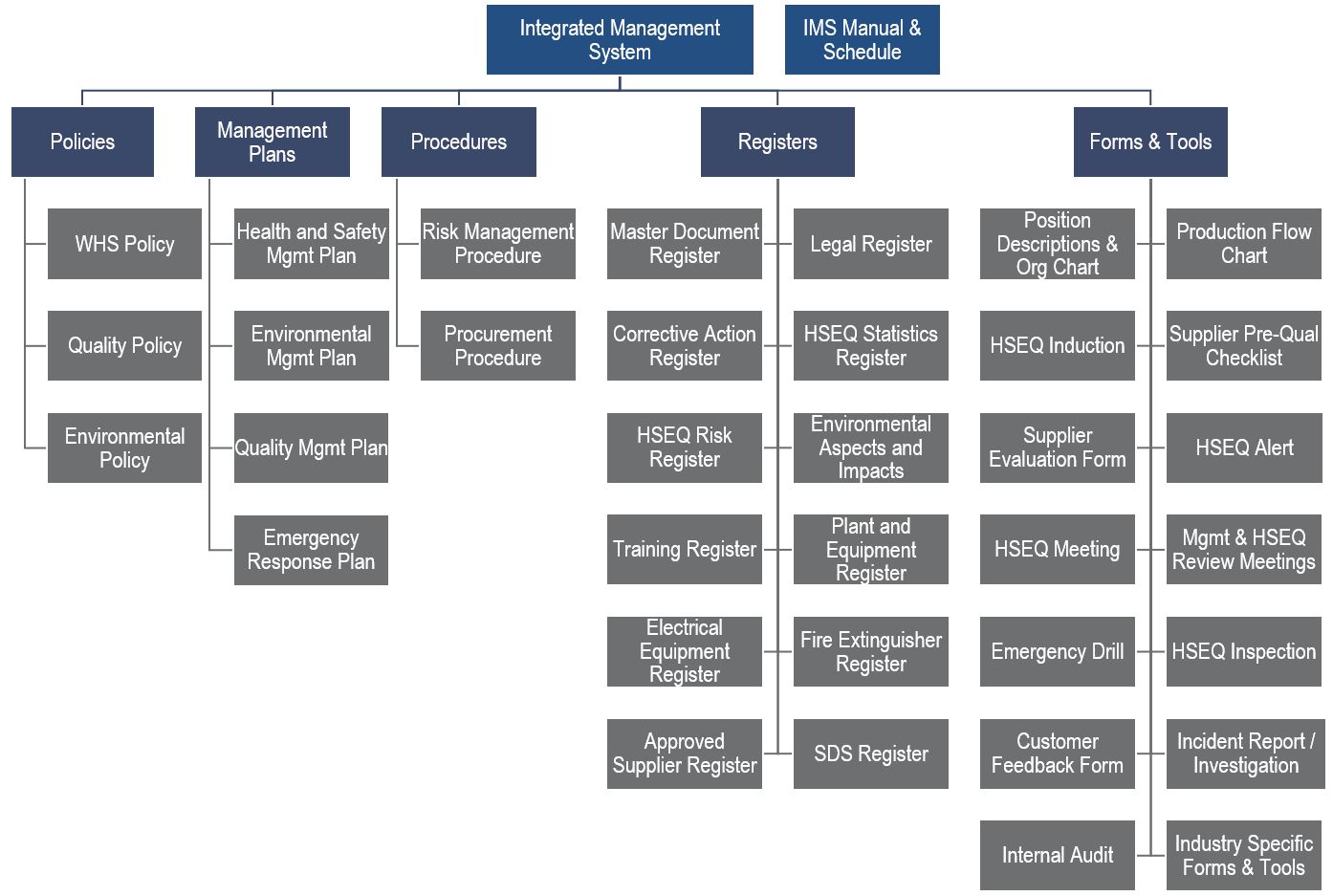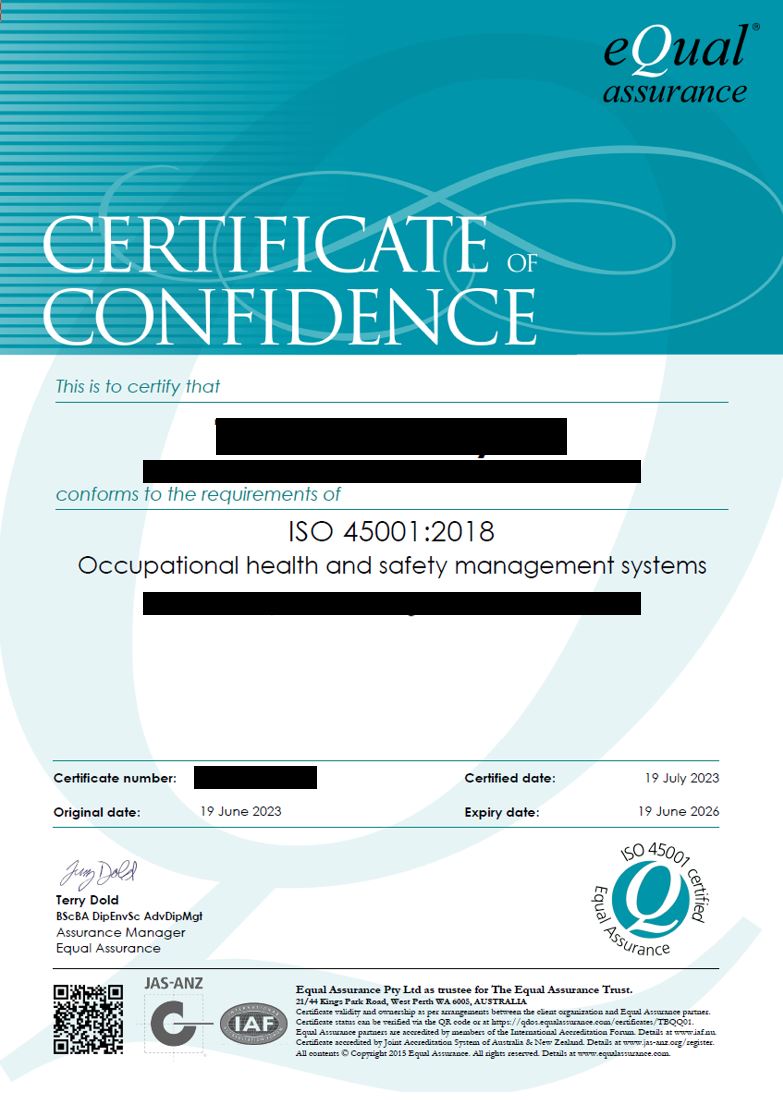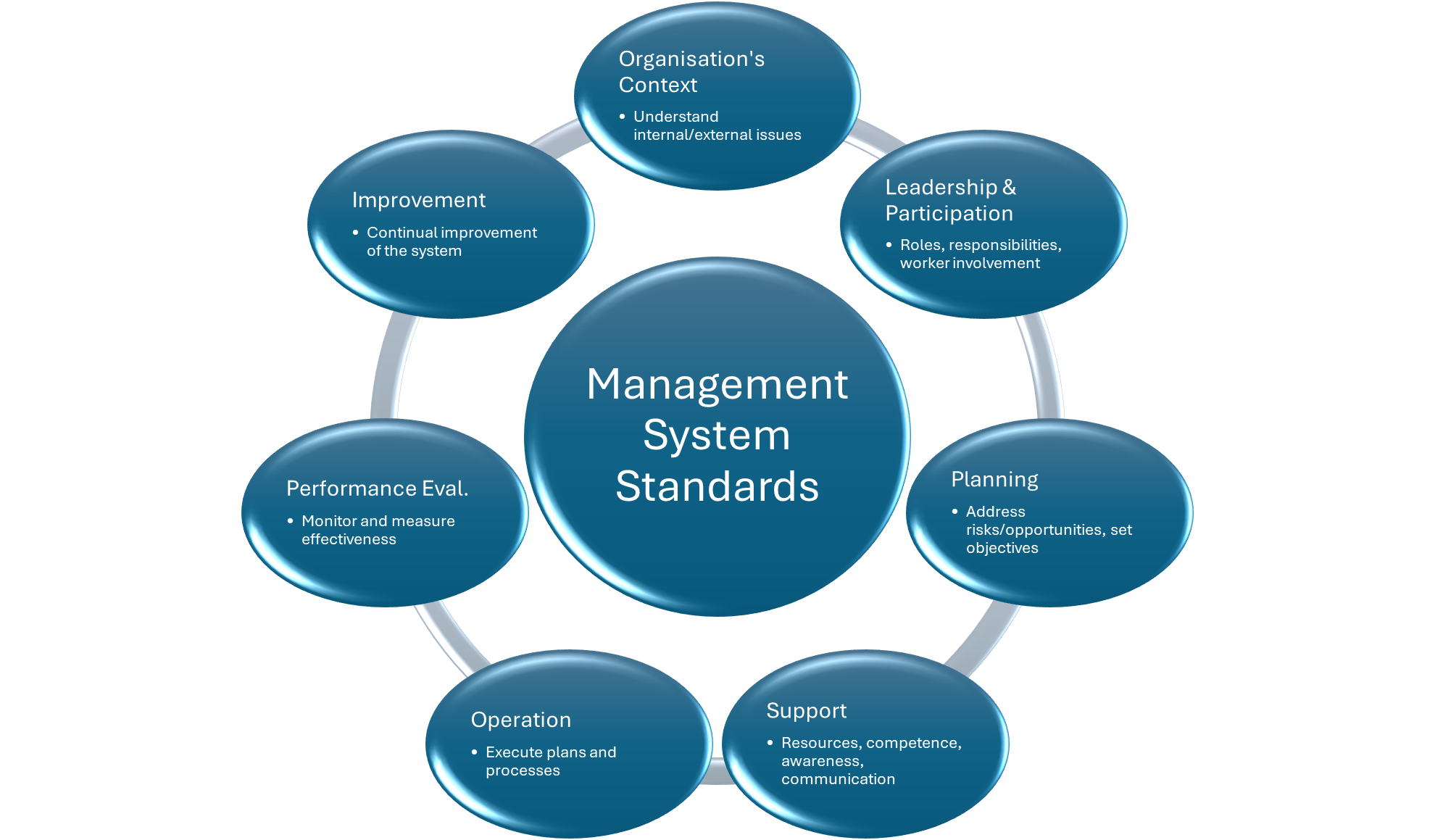Integrated Management System for Easy ISO Certification

What is an Integrated Management System (IMS)?
An Integrated Management System (IMS) combines multiple standards, in this case ISO 45001 (Occupational Health and Safety), ISO 9001 (Quality Management) and ISO 14001 (Environmental Management) into a unified framework.
The IMS is essentially a collection of documents which assist in managing an organisation.

What is ISO Certification?
ISO Certification is actually slang. Even those in the industry use the phrase, however what we really mean is JASANZ Certification (usually). JASANZ is the Joint Accreditation System of Australia and New Zealand. To be JASANZ Certified, the business must implement a management system and undergo a third-party audit.
The reason we normally call it ISO Certification is because the International Organisation for Standardisation (ISO) writes and publishes the standards.
Now we’ll swap back to calling it ISO Certification!
How Do I Get My Business ISO Certified?
Step 1: Gap Analysis (SKIP THIS?)
Many consultants will start with a gap analysis to identify gaps in your existing system, with the goal of filling these gaps to achieve certification. In our experience, many clients do not need a gap analysis and their journey starts at Step 2 below.
Even if the company has existing documentation or systems, it is usually simplest and easiest to begin with a new WHS Management System and simply “add-in” any existing documents or procedures that will add value to the new system (quite often a lot of the old documentation is retired or archived).
Step 2: Getting an Integrated Management System (IMS)
Option 1 – Purchase “Off-The-Shelf” IMS
Purchasing an off-the-shelf system is fastest and cheapest. This IMS will be generic in nature, but workplace-specific documentation can be added to the system.
Its similar to how you would make a homemade pizza – you are likely to buy the pizza base (or even a plain cheese pizza) from the supermarket, and then add your own choice of toppings. Then, bam! You have your own customized and workplace-specific Integrated Management System (or pizza! or both!).
Option 2 – Write the IMS From Scratch
This option could be a lengthy process – and it will likely need to be written by someone with experience (or a consultant). For example, the IMS Manual is typically 20 – 50 pages (or longer). The entire system could take months to create – why reinvent the wheel?
Step 3: Overview of Operations
The next steps assume you have purchased an off-the-shelf integrated management system and engaged a consultant (hopefully us!) to assist.
The real work begins! We need to learn about your company’s:
- Operations
- Staff
- Work Sites / Locations
Step 4: Develop Company-Specific Documentation
Company-specific documents may include SWMS, Permit Systems or Inductions. In addition to the front-end documents, the back-end documents including Policies, Procedures and Registers (or spreadsheets) are developed. To learn about Policies and Procedures, read our detailed guide.
Step 5: Implement the Integrated Management System
Now, use the system! This can include inducting staff (with the new induction tool) and implementing Safe Work Procedures (SWPs or SWMS). You also need to conduct the following:
- HSEQ Inspection
- HSEQ Meeting (and distribute a HSEQ Alert)
- Emergency Drill
- Management Review Meeting
- Internal Audit (we help with this step)
You will also need to ensure your workplace is safe and well-managed. For example, ensuring first aid kits, spill kits and fire extinguishers are available.
Step 6: Third-Party Audit (The Easy Step)
Now you can sit back and let the auditor admire your Integrated Management System. A third-party auditor will review your documentation and workplace. There will be corrective actions (i.e. stuff that needs fixing). However, we have a 100% success rate and have never failed an audit.
Step 7: Get Your ISO 45001, 9001 and 14001 Certificates
You will be issued with certificate/s which you can display on your website and submit for tenders.
Step 8: Keep Your Certificates
You will required “surveillance audits” yearly and “re-certification audits” every 3 years to maintain your certification.

What Do The ISO Standards Cover?
There are thousands of ISO Standards covering everything from Electric Vehicles to Sewer Drains. ISO also publishes standards for management systems. In this case, the standards we are interested in are:
- AS/NZS ISO 45001 (OHS)
- AS/NZS ISO 9001 (Quality), and
- AS/NZS ISO 14001 (Environmental)
These standards cover all aspects of management within the organisation, including the organisational context, leadership and worker participation, planning, support, operation, performance evaluation and improvement.

Organisation’s Context: This section requires understanding the internal and external factors that can impact the organization’s objectives. It involves identifying stakeholders and their needs. For example, a company might conduct a SWOT analysis to identify strengths, weaknesses, opportunities, and threats.
Leadership & Participation: This section emphasizes the importance of leadership commitment and worker participation. Leaders must establish a clear vision and ensure roles and responsibilities are well-defined. For instance, a company might hold regular meetings to engage employees in decision-making processes and ensure everyone understands their roles.
Planning: This involves identifying risks and opportunities and setting objectives to address them. It includes planning actions to achieve these objectives. For example, a company might develop a risk management plan to mitigate potential hazards and set specific, measurable goals for improvement.
Support: This section covers the resources needed to implement the management system, including human resources, infrastructure, and communication. It also involves ensuring competence and awareness. For instance, a company might provide training programs to ensure employees have the necessary skills and knowledge.
Operation: This involves the execution of plans and processes to meet the management system’s requirements. It includes controlling outsourced processes and emergency preparedness. For example, a company might develop standard operating procedures (SOPs) to ensure consistent and effective operations.
Performance Evaluation: This section requires monitoring, measurement, analysis, and evaluation of the management system’s performance. It includes internal audits and management reviews. For instance, a company might conduct regular audits to assess compliance with standards and identify areas for improvement.
Improvement: This focuses on continual improvement of the management system. It involves identifying nonconformities and taking corrective actions. For example, a company might implement a corrective action plan to address issues identified during audits and track progress over time.
FAQs
How long does certification take?
This depends on the company, but certification can be done in as little as 8 weeks.
Who conducts the certification audit?
Accredited certification bodies (or third-party auditors) perform the audit.
What is a certification body?
An organization accredited to certify compliance with ISO standards.
What are the benefits of ISO certification?
Benefits include improved efficiency, compliance, and stakeholder confidence.
How often are audits conducted?
Initial certification, followed by annual surveillance audits.
Can small businesses get certified?
Yes, ISO certification is scalable for businesses of all sizes.
Did You Know?
The International Organization for Standardization (ISO) was officially founded on February 23, 1947, but its roots go back even further. Before ISO, there was the International Federation of the National Standardizing Associations (ISA), established in 1926. ISA primarily focused on mechanical engineering standards. However, during World War II, the need for broader international cooperation in standardization became evident. This led to the formation of ISO, which now develops standards across a wide range of industries, from technology to food safety.
Articles and Further Reading
- Leadership Commitment’s Affect On WHS (Spire Safety) <https://spiresafety.com.au/resources/whs-leadership-commitment/>
- The Complete Guide to WHS Policies and Procedures in Australia (Spire Safety) <https://spiresafety.com.au/resources/guide-to-whs-policies-and-procedures/>
- About Us (JASANZ) <https://www.jasanz.org/about-us>
